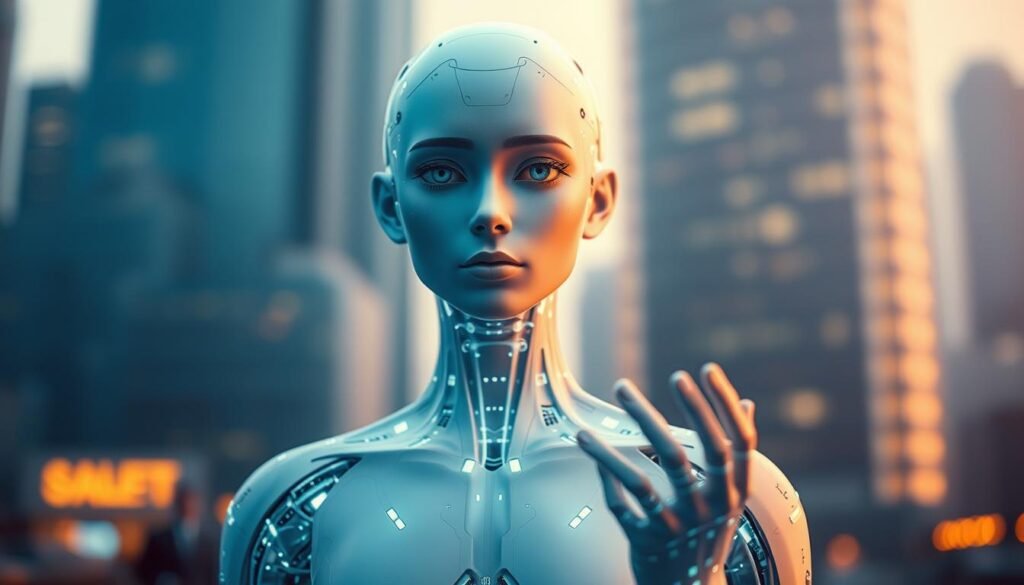Have you ever wondered how far artificial intelligence can go in mimicking human behavior? ByteDance, the company behind TikTok, has pushed the boundaries with its latest innovation, OmniHuman. This groundbreaking AI model can generate lifelike human videos from just a single image, setting a new standard in digital content creation.
Trained on an impressive 18,700 hours of human video data, OmniHuman excels in creating natural movements and expressions. From hand gestures to speech synchronization, the results are strikingly realistic. This tool is not just a technical marvel; it’s a game-changer for creators and viewers alike.
What does this mean for the future of content creation? As AI continues to evolve, models like OmniHuman are redefining how we interact with digital media. The implications are vast, from enhancing social media platforms to revolutionizing human-AI collaboration.
Key Takeaways
- ByteDance’s OmniHuman generates lifelike human videos from a single image.
- The model is trained on 18,700 hours of human video data.
- It creates natural expressions, hand gestures, and speech synchronization.
- This innovation sets new benchmarks for digital content creation.
- OmniHuman has the potential to transform social media and AI collaboration.
Overview and Technological Breakthroughs
ByteDance has redefined the boundaries of AI with its latest innovation. By leveraging 18,700 hours of diverse human video data, the company has developed a model that sets new standards in AI-generated content. This breakthrough is not just about technology; it’s about transforming how we create and consume digital media.
ByteDance’s Groundbreaking Training Methodology
The training methodology behind this tool is a marvel in itself. Researchers used an extensive dataset to ensure the model captures every detail, from facial expressions to hand movements. This approach allows the system to handle varied inputs, such as portraits, half-body, and full-body images, with remarkable precision.
One of the standout features is its ability to process text, audio, and physical cues simultaneously. This integration ensures that the generated content is not only visually stunning but also contextually accurate. The research paper detailing this method highlights its technical capabilities and innovations.
Demonstrations and Visual Capabilities
Demonstrations of this model showcase its ability to produce lifelike motions and synchronized speech. Whether it’s a historical figure or a modern influencer, the results are strikingly realistic. The tool supports various aspect ratios, making it versatile for different types of content.
From capturing subtle facial expressions to complex body poses, the model excels in delivering high-quality visuals. These breakthroughs are not just technical achievements; they are the foundation for the next phase of human-AI collaboration.
Tiktok’s Omni Human: Innovations in Human-AI Collaboration
Digital content creation is being revolutionized by advanced AI models that transform static images into dynamic videos. This breakthrough is reshaping how we interact with technology, blending creativity with cutting-edge tech.

Generating Lifelike Videos from Single Images
The ability to create realistic videos from a single image is a game-changer. This model uses advanced algorithms to analyze input and generate natural movement, facial expressions, and even synchronized speech. The results are strikingly lifelike, setting a new standard for digital content.
Researchers trained the system on an extensive dataset, ensuring it captures every detail from full-body poses to subtle gestures. This approach allows the tool to handle various inputs, from portraits to complex scenes, with remarkable precision.
Comparing with Traditional Models
Traditional video synthesis methods often struggle with naturalism and synchronization. In contrast, this model excels in producing fluid movement and realistic audio integration. Experts highlight its ability to blend tech and creativity seamlessly.
For example, transforming historic images into dynamic presentations showcases its capabilities. The result is not just visually stunning but also contextually accurate, making it a valuable tool for creators and researchers alike.
This innovation represents a significant leap in human-AI collaboration, paving the way for new possibilities in digital storytelling and beyond.
Ethical Considerations and Industry Impact
The rise of AI-generated video content brings both innovation and ethical challenges. While tools like this model offer incredible potential, they also raise concerns about misuse and accountability. The ability to create lifelike videos from a single image has sparked debates about authenticity and trust in digital media.

Potential Risks and Deepfake Dangers
One of the most pressing concerns is the misuse of this tool for creating deepfakes. These realistic videos can be used to spread political disinformation or commit identity fraud. Experts warn that the model‘s ability to replicate facial expressions and body language makes it particularly dangerous in the wrong hands.
For example, a video of a historical figure could be manipulated to spread false narratives. This highlights the need for safeguards to prevent malicious use. The research paper on this technology underscores the importance of addressing these risks proactively.
Societal and Regulatory Responses
Governments and regulatory bodies are already taking steps to address these challenges. In the U.S., there are calls for stricter policies to curb the spread of synthetic content. Transparency measures, such as labeling AI-generated videos, are being considered to help viewers distinguish between real and fake media.
Experts emphasize the need for collaboration between tech companies, policymakers, and the public. This approach can ensure that innovation is balanced with ethical responsibility. The industry must also prioritize educating users about the potential risks of AI-generated video.
Future Prospects and Safeguards
Looking ahead, the development of safeguards will be crucial. ByteDance and other stakeholders are exploring ways to integrate watermarking and verification systems into their tools. These measures can help identify AI-generated content and reduce the risk of misuse.
Additionally, ongoing research into ethical AI practices will play a key role in shaping the future of this technology. By addressing these challenges head-on, we can harness the benefits of AI while minimizing its potential harms.
Conclusion
The advancements in AI-driven video production are reshaping the digital landscape. ByteDance’s innovative tool has set new benchmarks, transforming how we create and consume content. By leveraging extensive datum, this technology generates lifelike videos with remarkable precision.
However, these breakthroughs come with ethical challenges. The potential misuse of such tools highlights the need for regulatory measures and transparent practices. As we move forward, continued research and collaboration will be essential to ensure responsible integration into mainstream media.
This aspect of AI innovation symbolizes both technological promise and the necessity for vigilant oversight. By balancing creativity with ethical responsibility, we can harness the full potential of these advancements while safeguarding trust in digital media.




